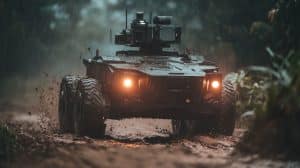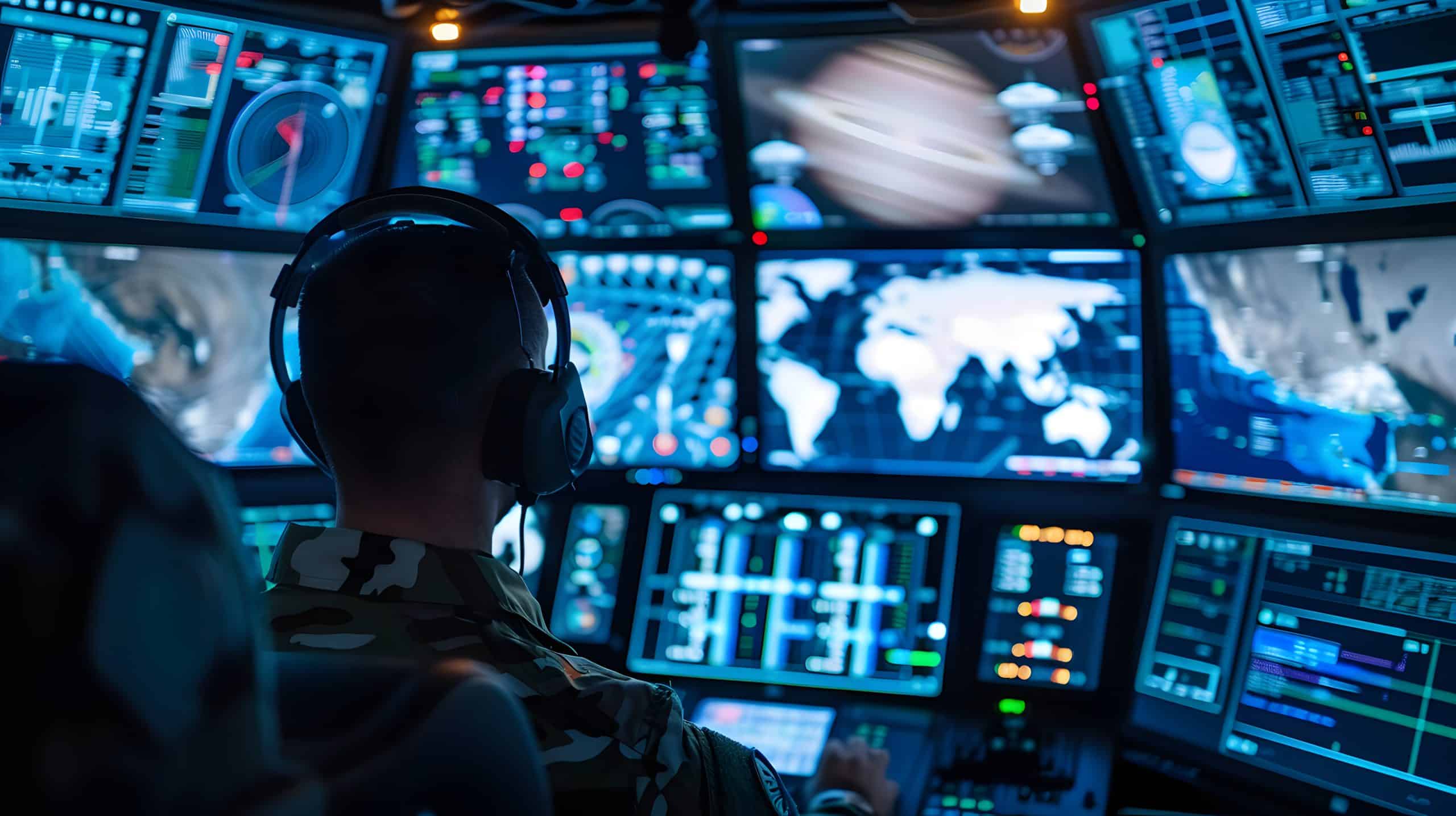Militaries have long identified AI as a technology with disruptive potential for defense and are prioritizing budgets accordingly to maintain military superiority. For example, the U.S. Department of Defense’s fiscal year 2025 budget requested $4.9 billion for AI-related projects. That is because AI in the military has become a key factor in improving the defense’s strategic advantage.
AI’s role in the military is not limited to mere automation. It is an enabler for sophisticated capabilities – particularly in artificial intelligence for video surveillance – where speed and accuracy are critical.
5 Common Applications of AI in the Military
1. AI-Powered Video Capabilities in Surveillance
Surveillance is one area where AI has had a major impact on video. AI-enabled security cameras can now analyze video streams to find any anomalies or potential threats, such as unauthorized personnel or unusual movements. Automated alerts improve response times by notifying operators immediately when certain pre-defined conditions are met.
2. Machine Learning and Facial Recognition in Military and Situational Awareness Applications
Facial recognition technology, powered by machine learning, is now a large part of military identification processes. This technology, coupled with video analytics edge computing, makes identifying people of interest easier, improves border security, and integrates with biometric databases to prevent unauthorized access to sensitive areas.
3. Drone Swarms
AI is at the center of drone swarm operations. Drone swarms can autonomously conduct reconnaissance missions over vast areas, execute attacks with precision, and even continue their original mission when individual drones are compromised. In 2024, the UK, U.S., and Australia took part in a joint exercise under the AUKUS security pact, where they deployed AI-enabled autonomous drones to detect and share data about enemy targets.
4. Combat Training and Simulation
AI is changing the way combat training is conducted. Today’s immersive simulations allow soldiers to prepare for a wide range of combat scenarios – without requiring physical resources or subjecting personnel to danger. AI-driven dynamic layers can be added to the training, making the experience incredibly realistic and improving skills under pressure.
5. Autonomous Vehicles and Navigation Systems
AI supports autonomous vehicles as they navigate complex terrains. These systems feature obstacle detection and avoidance, as well as real-time route optimization. Ukraine anticipates increasing the use of uncrewed robotic ground vehicles and AI-targeting drones to support infantry. For example, autonomous vehicles can deliver supplies and evacuate wounded soldiers.

Benefits of Using AI Video Capabilities in Military Applications
The integration of AI into video security has multiple advantages:
- Enhanced Strategic Decision-Making: By providing real-time intelligence, informed decisions can be made faster.
- Improved Data Processing: AI processes vast datasets quickly, enabling the extraction of critical insights without relying heavily on human resources.
- Increased Efficiency: Automated systems reduce manpower requirements while maintaining or exceeding traditional levels of accuracy.
5 Top Recent Breakthroughs of AI in the Military
1. Real-Time Multimodal Data Fusion
AI systems integrate data from multiple sources – such as video, radar, and thermal imaging – to provide military leadership with a full operational picture. This data fusion allows military personnel to make informed decisions quickly. For example, the U.S. Air Force uses advanced algorithms and machine learning models to analyze diverse data streams, which helps them find patterns and anticipate threats.
2. Predictive Maintenance
AI models in the army analyze operational data to forecast equipment failures before they occur, alongside reducing downtime. For example, the U.S. Air Force has designated the Predictive Analytics and Decision Assistant (PANDA) as its system of record for Condition Based Maintenance Plus (CBM+). PANDA integrates AI and machine learning to analyze aircraft maintenance data and predict equipment failures before machines are deployed in the field.
3. Advanced Target Recognition
AI-powered systems can distinguish between friendly forces, adversaries, and civilians with remarkable accuracy, a capability that goes a long way toward minimizing collateral damage. The U.S. and its allies have recently successfully tested AI-enabled drones that are capable of autonomously identifying and engaging targets as if in an active war.
4. Edge AI Deployment
Implementing AI algorithms directly in field devices – known as edge AI – reduces reliance on centralized data centers. In tactical scenarios, edge AI allows military units to gain insights and make fast and timely decisions – a factor that is crucial for mission success.
5. Improved Electronic Warfare Capabilities
AI in the army enhances electronic warfare by enabling faster and more accurate signal interception and countermeasures. AI-enabled drones used for reconnaissance and combat, utilize AI to navigate contested electromagnetic environments and counteract enemy jamming efforts. Ukrainian startups are rapidly developing AI systems to support a vast fleet of drones, aiming to counter Russian signal jamming and enable UAVs to operate in larger, interconnected swarms.
Current Issues, Limitations and What’s Ahead
While there is a clear promise for AI in military video applications, several challenges must be addressed to fully harness its potential. AI systems are prime targets for cyberattacks, given their critical role in defense operations. Interconnected military AI networks, known as the Internet of Military Things (IoMT), further increase these security concerns. Poorly secured IoT devices within the IoMT can be vulnerable to attacks, potentially exposing large amounts of confidential information and compromising the entire network.
In addition, the deployment of AI in autonomous weaponry raises ethical questions. Will AI-based decision support systems dilute the human-heart element in moral and ethical decision-making during military operations? This necessitates the development of robust ethical frameworks to govern AI use in combat scenarios.
About Maris-Tech’s Products
Maris-Tech specializes in AI-powered video security and video analytics edge computing solutions tailored for military and defense applications. Our edge AI systems offer support for a range of military applications:
- Video processing and analytics across telemetry, surveillance, intelligence, and tactical operations
- Missile targeting, covert missions, and observation systems
- Weapon sights, helmet-mounted systems, UAVs, and wearable devices
- Enhanced situational awareness in diverse environments
Discover how Maris-Tech can enhance your operations with high-powered AI video capabilities. Contact us today to learn more.


